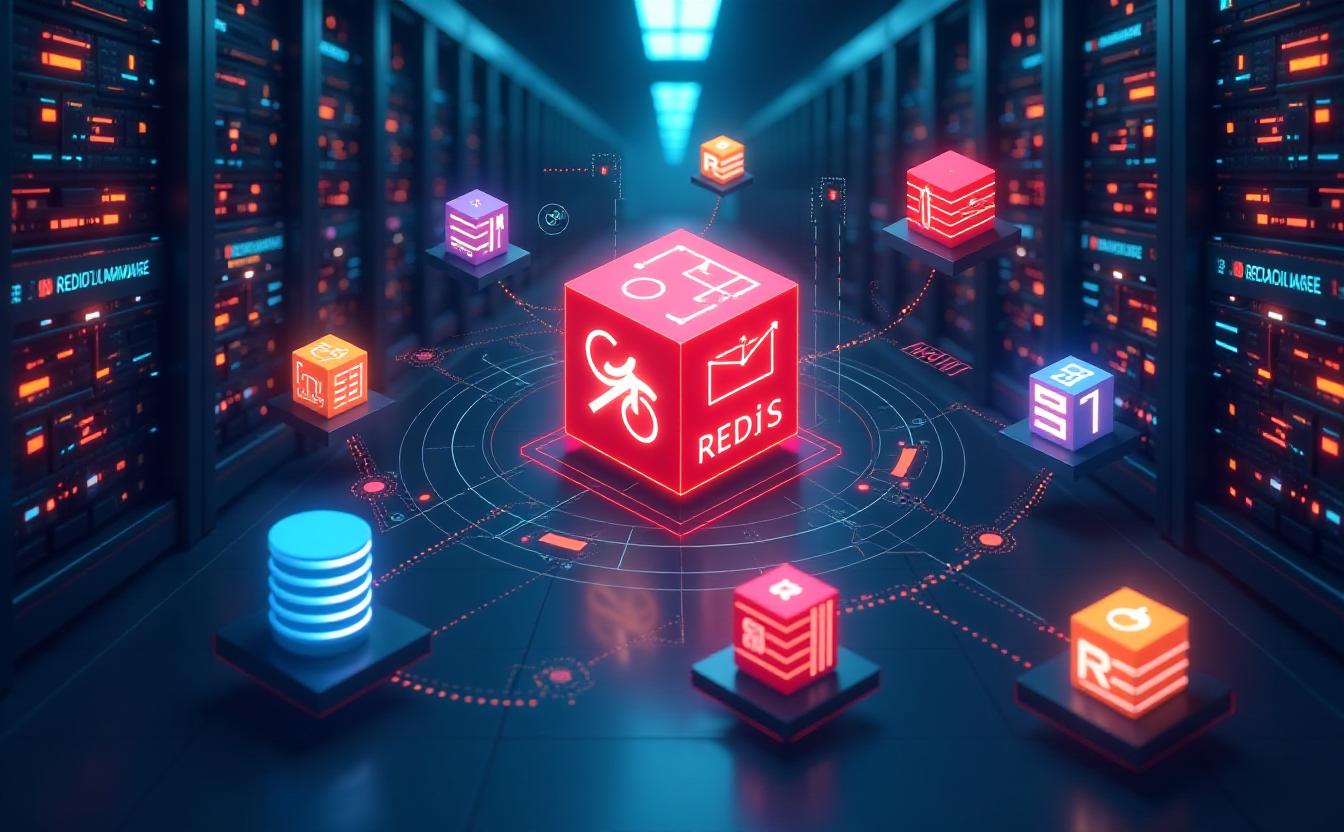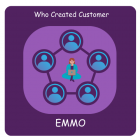Top 10 Redis Alternatives for Your Data Storage Needs

Top 10 Redis Alternatives for Your Data Storage Needs
Table of Contents
- Introduction to Redis Alternatives
- Why Consider Alternatives to Redis?
- Key Features to Look for in a Data Storage Solution
- 1. Memcached: A Lightweight Caching Solution
- 2. Apache Cassandra: A Distributed NoSQL Database
- 3. MongoDB: A Flexible Document Database
- 4. Amazon DynamoDB: A Fully Managed NoSQL Service
- 5. Couchbase: A Hybrid NoSQL Database
- Comparing Performance and Scalability of Redis Alternatives
- Conclusion: Choosing the Right Data Storage Solution
Introduction to Redis Alternatives
Redis is widely recognized for its speed and versatility as an in-memory data structure store. It is often employed for caching, session management, real-time analytics, and pub/sub messaging. However, as organizations scale and their data requirements evolve, Redis may not always meet specific needs. This guide explores five robust alternatives to Redis, detailing their unique features, advantages, and ideal use cases. By understanding these options, you can choose the best solution for your data storage and management challenges.
Why Consider Alternatives to Redis?
While Redis is highly performant and efficient, there are several reasons you might seek alternatives: Persistence Needs: Redis primarily operates in memory, which means that data is lost if the server crashes unless persistence options are enabled. For applications requiring durable storage, alternatives like MongoDB or Cassandra may be more suitable. Data Complexity: Redis is excellent for simple key-value storage but can struggle with complex data models or relationships. If your application requires advanced querying or relationships between data, alternatives may offer better functionality. Scalability Challenges: Redis can be challenging to scale horizontally due to its single-threaded nature. Although Redis Cluster provides sharding capabilities, you may find that distributed databases like Cassandra or Couchbase are more straightforward to scale across multiple nodes. Operational Complexity: Managing Redis can become complex, especially in large-scale environments. Alternatives like Amazon DynamoDB offer fully managed services that reduce operational overhead. Cost Considerations: Depending on your usage patterns, the cost of running Redis clusters may become significant, particularly with larger datasets. Exploring other options might yield more cost-effective solutions.
Tip
If you offer your SEO texts in several languages or localize them for different regions, your pages may be incorrectly classified as duplicate content. However, there is a simple solution to this in the form of hreflang. Our article explains what you need to bear in mind when using hreflang.
Read more about hreflangKey Features to Look for in a Data Storage Solution
When selecting a data storage solution, consider the following features: Performance: Look for low-latency access and high throughput to ensure your application responds quickly to user requests. The performance metrics should align with your application's demands. Scalability: Assess whether the solution can handle increased loads as your data grows. Solutions that support horizontal scaling are often preferable for applications expecting significant growth. Data Model Flexibility: Understand the data structures supported by the database. For example, document databases are excellent for handling semi-structured data, while key-value stores are simpler but more limited. Consistency and Availability: Evaluate the trade-offs between consistency and availability based on your application’s requirements. Some databases offer eventual consistency, while others provide strong consistency guarantees. Ease of Integration: Check how easily the database integrates with your existing tech stack. Look for compatibility with programming languages, frameworks, and other tools you use. Community and Support: A vibrant community and strong support options can be invaluable for troubleshooting and learning. Consider the availability of documentation, forums, and professional support services.
1. Memcached: A Lightweight Caching Solution
Memcached is an open-source, high-performance distributed memory caching system designed to enhance dynamic web applications. It achieves this by reducing the load on databases through caching frequently accessed data. Memcached operates on a simple key-value storage model, making it easy to implement and use. Pros: Speed: Memcached provides lightning-fast data retrieval due to its in-memory architecture. Simplicity: Its straightforward design makes it easy to set up and integrate into existing applications. Scalability: Memcached can be distributed across multiple servers, allowing for easy horizontal scaling. Cons: No Persistence: Memcached does not store data permanently, meaning all cached data is lost if the server crashes. Limited Data Structures: It only supports simple key-value pairs, which may not meet all application needs. Memcached is particularly effective for caching database query results, sessions, and frequently accessed data in web applications.
2. Apache Cassandra: A Distributed NoSQL Database
Apache Cassandra is a highly scalable and fault-tolerant distributed NoSQL database designed to handle large amounts of structured and unstructured data across multiple nodes. It provides high availability with no single point of failure. Pros: Scalability: Cassandra's architecture allows for linear scalability, making it easy to add nodes without downtime. High Availability: It offers continuous availability through data replication across multiple data centers. Flexible Data Model: Cassandra supports a wide variety of data types and structures, making it versatile for different applications. Cons: Complexity: Its setup and management can be complex, requiring careful planning for data modeling and cluster management. Eventual Consistency: Cassandra uses eventual consistency, which may not be suitable for all applications requiring strong consistency. Cassandra is ideal for applications that need to handle high write and read volumes, such as IoT applications, real-time analytics, and large-scale web applications.
3. MongoDB: A Flexible Document Database
MongoDB is a popular NoSQL database that stores data in flexible, JSON-like documents. This format allows for dynamic schemas and complex data structures, making it highly adaptable. Pros: Schema Flexibility: You can easily change data structures without downtime, accommodating evolving application needs. Rich Queries: MongoDB supports advanced querying capabilities, including text search and geospatial queries. Horizontal Scalability: MongoDB can be sharded across multiple servers, allowing for seamless scaling. Cons: Complex Transactions: While MongoDB supports multi-document transactions, they can be complex and may impact performance. Memory Usage: Large datasets may require significant memory, impacting performance if not managed correctly. MongoDB is an excellent choice for applications with diverse and evolving data, such as content management systems, e-commerce platforms, and social media applications
4. Amazon DynamoDB: A Fully Managed NoSQL Service
Amazon DynamoDB is a fully managed NoSQL database service provided by AWS that automatically handles hardware provisioning, setup, configuration, and replication. Pros: Managed Service: AWS handles scaling, backups, and maintenance, allowing developers to focus on application development. Performance: DynamoDB offers single-digit millisecond response times, making it suitable for high-performance applications. Integration with AWS Ecosystem: It seamlessly integrates with other AWS services, providing a comprehensive solution for cloud applications. Cons: Cost: Pricing can become high depending on usage patterns and the provisioned throughput model. Learning Curve: Developers may need time to learn DynamoDB’s unique data modeling and query techniques. DynamoDB is ideal for applications requiring high availability and scalability, such as mobile backends, gaming applications, and real-time data processing.
5. Couchbase: A Hybrid NoSQL Database
Couchbase combines the features of key-value and document databases, providing flexibility and speed. It allows for fast access to data and supports a SQL-like query language, N1QL, for complex queries. Pros: High Performance: Couchbase's architecture ensures low-latency data access, making it suitable for high-traffic applications. Flexible Data Models: It supports both key-value and document data models, catering to various use cases. Built-in Caching: The integrated caching layer enhances performance and reduces latency. Cons: Complex Setup: Configuring and managing Couchbase can be challenging, especially in distributed environments. Cost: Licensing and operational costs can be high for large-scale implementations. Couchbase is well-suited for applications that require rapid access to data, such as mobile and web applications, e-commerce, and content management systems.
Comparing Performance and Scalability of Redis Alternatives
When comparing Redis alternatives, it's crucial to assess their performance and scalability capabilities based on your specific application requirements: Memcached excels in caching scenarios, delivering exceptional performance with low latency but lacks persistence. Apache Cassandra is designed for high write and read throughput, making it a great choice for large-scale applications that require fault tolerance and scalability. MongoDB provides flexibility with document storage and rich query capabilities, catering well to applications with diverse data requirements. Amazon DynamoDB offers a fully managed solution with predictable performance and automatic scaling, ideal for cloud-native applications. Couchbase balances performance and flexibility, supporting both key-value and document use cases while ensuring quick data access. Choosing the right alternative will depend on your application's specific performance needs, expected data growth, and complexity.
Conclusion: Choosing the Right Data Storage Solution
Selecting the right data storage solution requires a thorough understanding of your application’s unique needs and constraints. While Redis is a powerful option for in-memory caching and data storage, the alternatives explored offer diverse features and capabilities that may align better with specific use cases. Consider factors like performance, scalability, persistence, and data complexity when evaluating these options. By exploring solutions such as Memcached, Apache Cassandra, MongoDB, Amazon DynamoDB, and Couchbase, you can find a data storage solution that not only meets your immediate requirements but also supports your application’s growth and adaptability in the future. Each of these alternatives has strengths and weaknesses, and the right choice will depend on your particular use case and organizational goals.
| Top 10 Redis Alternatives for Your Data Storage Needs | |
|---|---|
| 1. Memcached: A Lightweight Caching Solution | Memcached is a distributed memory caching system that speeds up dynamic web applications by reducing database load. It’s known for its simplicity and lightning-fast performance. |
| 2. Apache Cassandra: A Distributed NoSQL Database | Cassandra is a highly scalable NoSQL database designed for handling large amounts of structured data across many servers. It offers high availability without compromising performance. |
| 3. MongoDB: A Flexible Document Database | MongoDB stores data in flexible, JSON-like documents. Its schema flexibility and rich querying capabilities make it ideal for applications with evolving data structures. |
| 4. Amazon DynamoDB: A Fully Managed NoSQL Service | Amazon DynamoDB is a cloud-based NoSQL service that automatically scales to handle any amount of data and offers single-digit millisecond performance. |
| 5. Couchbase: A Hybrid NoSQL Database | Couchbase is a fast NoSQL database with built-in caching, making it suitable for applications that require high performance and flexibility for data storage. |
| 6. Riak: Distributed Database for High Availability | Riak is designed for high availability and fault tolerance. It automatically redistributes data in the event of a node failure, ensuring data redundancy. |
| 7. Aerospike: Real-time NoSQL Data Solution | Aerospike is a high-performance, real-time NoSQL database optimized for low-latency transactions and used for applications like fraud detection and real-time bidding. |
| 8. Hazelcast: In-Memory Data Grid | Hazelcast is an open-source in-memory data grid that helps distribute and process data across multiple servers for applications requiring high availability and scalability. |
| 9. VoltDB: High-Speed Database for Stream Processing | VoltDB combines in-memory storage and real-time analytics, making it ideal for applications needing low-latency processing for streams of data. |
| 10. Tarantool: In-Memory Database and Application Server | Tarantool is an open-source, in-memory database that combines database and application server functionality for rapid development and low-latency performance. |
FAQs
What Are Some Alternatives to Redis?
There are several alternatives to Redis that offer unique features for different data storage needs. These include Memcached, Apache Cassandra, MongoDB, Amazon DynamoDB, and Couchbase. Each has its advantages, depending on your application’s requirements for persistence, scalability, and complexity.
Why Would I Consider Using a Redis Alternative?
While Redis is excellent for in-memory data storage, you might consider alternatives due to factors like the need for persistent storage, complex data models, or scalability challenges. Alternatives like MongoDB or Cassandra provide solutions for these needs.
What Is Memcached and How Does It Compare to Redis?
Memcached is a lightweight, distributed memory caching system that is easy to implement and provides fast data retrieval. Unlike Redis, it doesn't support data persistence, making it suitable for caching but less ideal for applications that require durable data storage.
How Does Apache Cassandra Address Scalability?
Apache Cassandra is designed for horizontal scalability across multiple nodes, providing fault tolerance and high availability. It’s ideal for applications handling massive amounts of structured or unstructured data.
When Should I Choose MongoDB Over Redis?
MongoDB is a document-based NoSQL database offering schema flexibility and rich query capabilities. It’s a better choice than Redis if your application requires handling diverse, complex data structures or evolving schemas.
What Are the Advantages of Amazon DynamoDB?
Amazon DynamoDB is a fully managed NoSQL database that offers automatic scaling and low-latency performance. It integrates well with other AWS services, making it a great option for cloud-native applications needing minimal operational management.
What Are the Key Benefits of Using Couchbase?
Couchbase offers high performance and supports both key-value and document data models, making it flexible for various use cases. Its built-in caching capabilities provide fast access to data, ideal for high-traffic applications.










